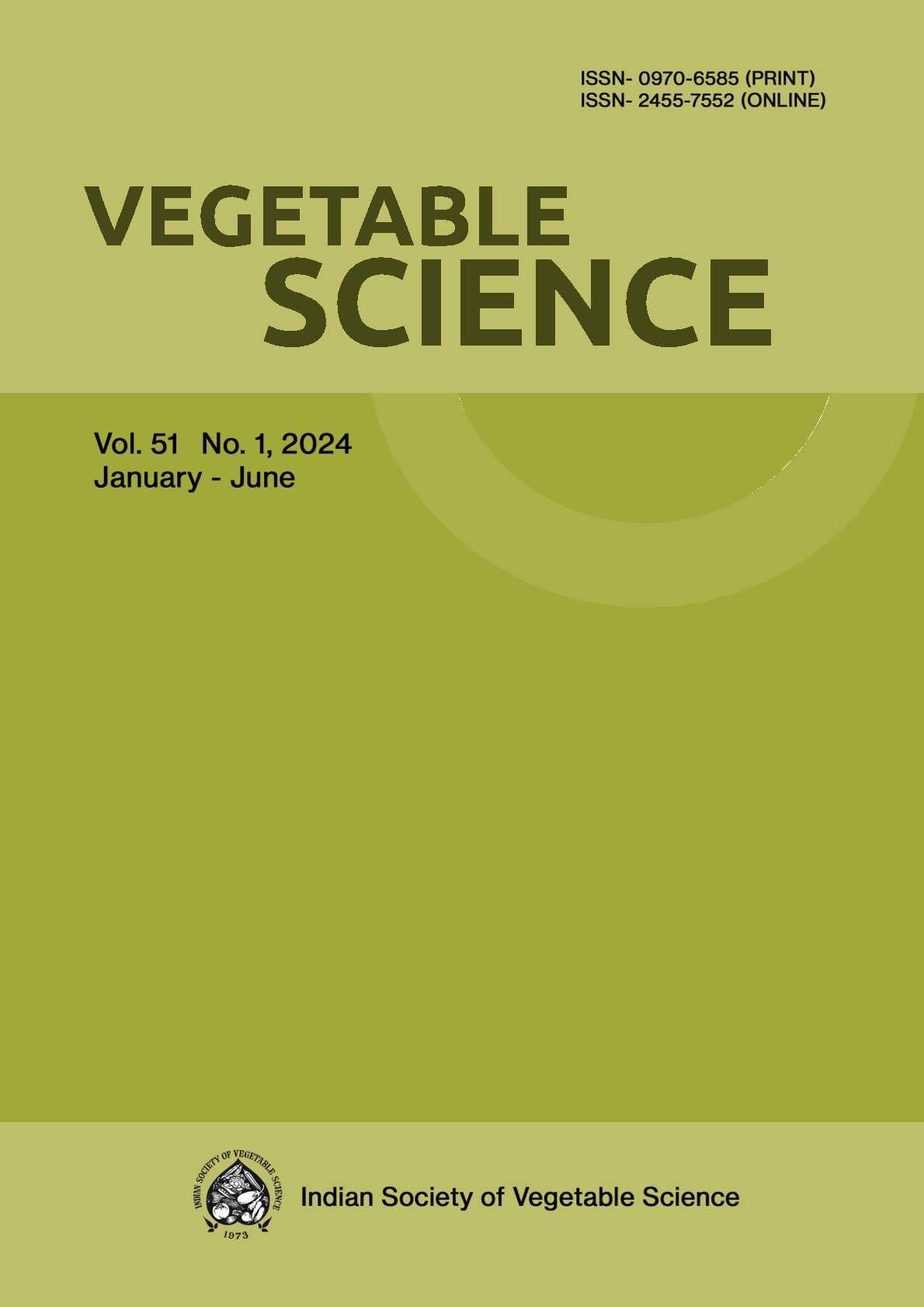Morphological characterization and components of genetic variation in brinjal (Solanum melongena L.)
DOI:
https://doi.org/10.61180/Keywords:
.Abstract
Solanum melongena L. (2n = 2x = 24) belongs to family
Solanaceae (Nightshades), comprises around 98 genera
and 2,700 species with huge diversity in terms of
habitats, morphology and ecology. It is extensively
cultivated vegetable crop in various countries parts of
the world (Singh and Kalda 2001). However, India is
the centre of diversity for this crop. Its primitive types
are tall plants with broad and thorny leaves, clustered
and andromonoecies flowers, small green fruits having
bitter taste, hard pulp and thick peel. The domestication
of primitive types, natural-outcrossing, mutation,
hybridization and selection from different backgrounds
created broad genetic diversity in cultivated brinjal
throughout the world. Now a day, cultivars are diverse
in shape, size and colour of fruits, earliness, yield and
quality of the fruits. These morphological differences
Downloads
Published
Issue
Section
License

This work is licensed under a Creative Commons Attribution-NonCommercial-NoDerivatives 4.0 International License.






